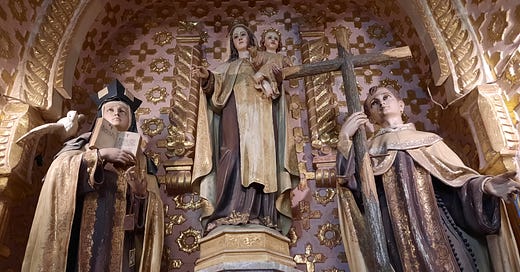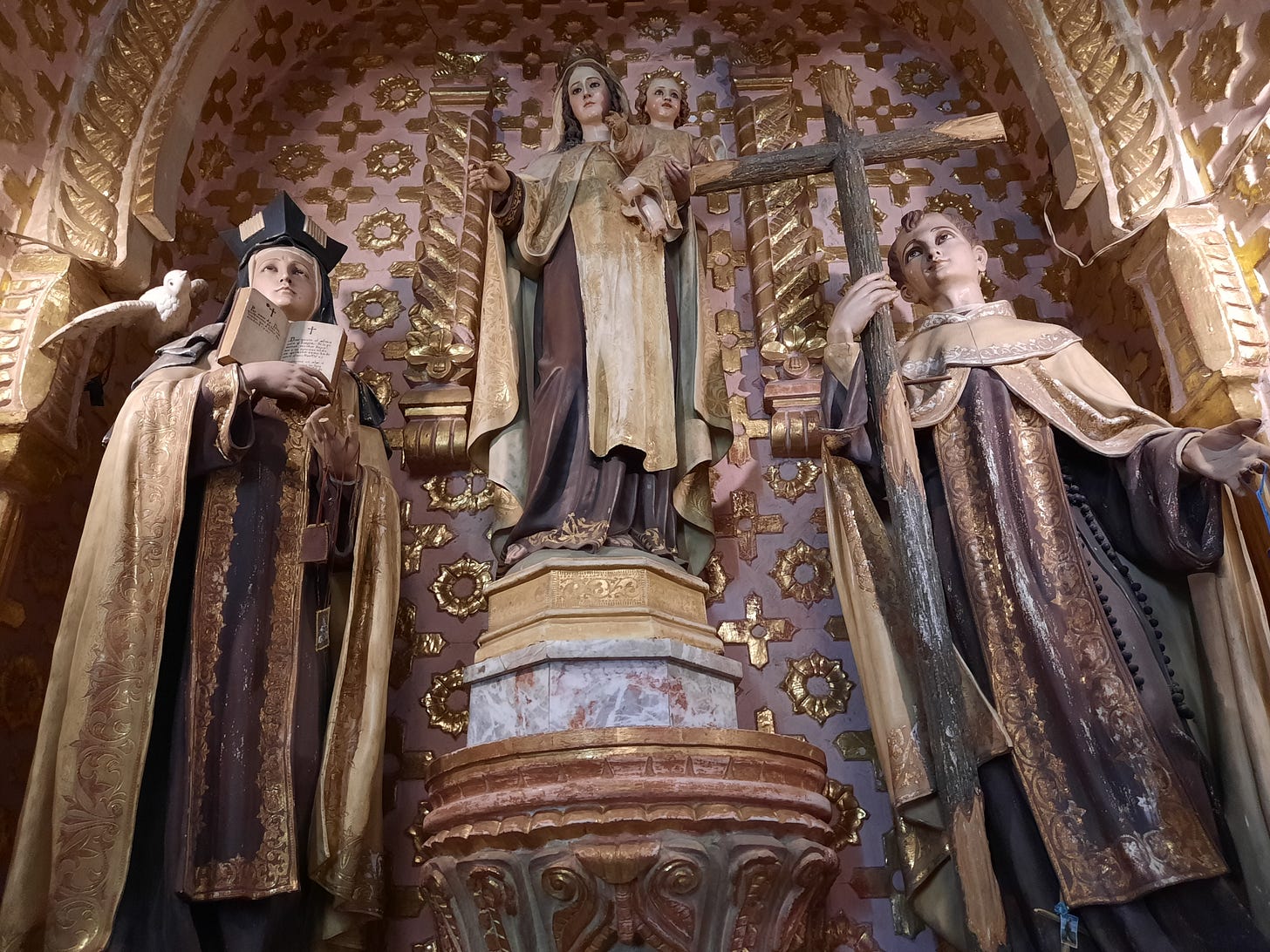(Photo credit: Juan Plan Carte via Cathopic)
Saint Teresa of Avila became prioress of the monastery of the Incarnation in Avila in October 1571. It was the monastery of her profession, where she spent nearly thirty years of her life. After she began her reformed houses in 1562, she never expected to come back. Even if no man is a prophet in his birthplace, Teresa’s superiors were confident she would clean up the mess.
The Incarnation included some women seeking to escape the demands of life in the world, in addition to genuine vocations. Teresa knew her higher standard of service out of love would be difficult to impose by mere rules. Well aware of the deep-seated spiritual malaise of the large institution, Teresa sent an adamant request for John of the Cross to sign on as confessor for her 180-odd nuns.
As usual, her request was honored. John arrived in May 1572, and set about hearing confessions, offering talks on spirituality. The “calced” friars still offered confessions, but Teresa counted on the winning ways of her prime padre to pull in the recalcitrant. He did. Writing out little sayings on small slips of paper, and offering keen observations with loving overtones, he was soon their favorite friar.
Teresa found his help invaluable. Although she had already written her autobiography and the Way of Perfection, she had begun to write her masterpiece, the Interior Castle. Under Padre Juan’s experienced guidance in 1572, she experienced the fullness of loving union with God, which she described as the seventh mansion.
On Trinity Sunday, 1573, the two saints were seated on opposite sides of the grille in the speakroom. Their intense conversation on the Trinity, combined with prayerful exhortation, was not interrupted when Teresa’s niece, Beatriz de Cepeda y Ocampo, entered the room.
Before her eyes, Teresa was levitating, oblivious to her presence. Through the grille, she could see John of the Cross was also aloft, and even his chair! Such events of ecstasy were not uncommon for Teresa in her later years, who sometimes had to have her nuns hold her down when she began to levitate during public liturgies.
Teresa joked about it later, blaming it all on saintly John, “You can’t speak about God with Fray Juan de la Cruz because he gets carried off in ecstasy and carries others off with him.”
When they first met, Teresa gave John a Carmel worthy of his unique talents. But ever after, it was John’s gift to offer the Carmelite family his deeply “uplifting” outlook on life, including his Dark Night of the Soul.
His 1577 imprisonment by jealous calced friars only led to a greater good. The poetry he composed as a prisoner is acclaimed by secular experts. His internal freedom defied all worldly bonds. No one could hold the holy man down, and he lifted many to the honors of the altar with him.





